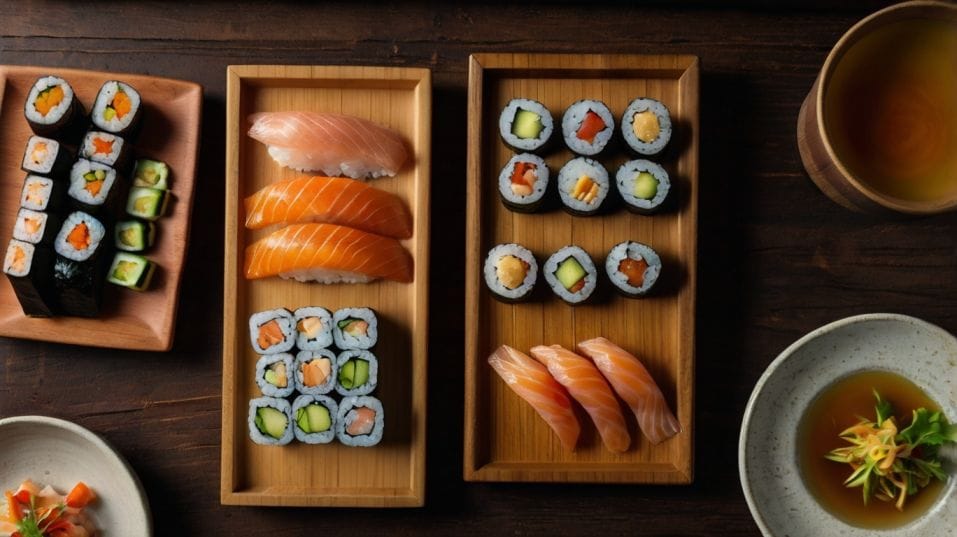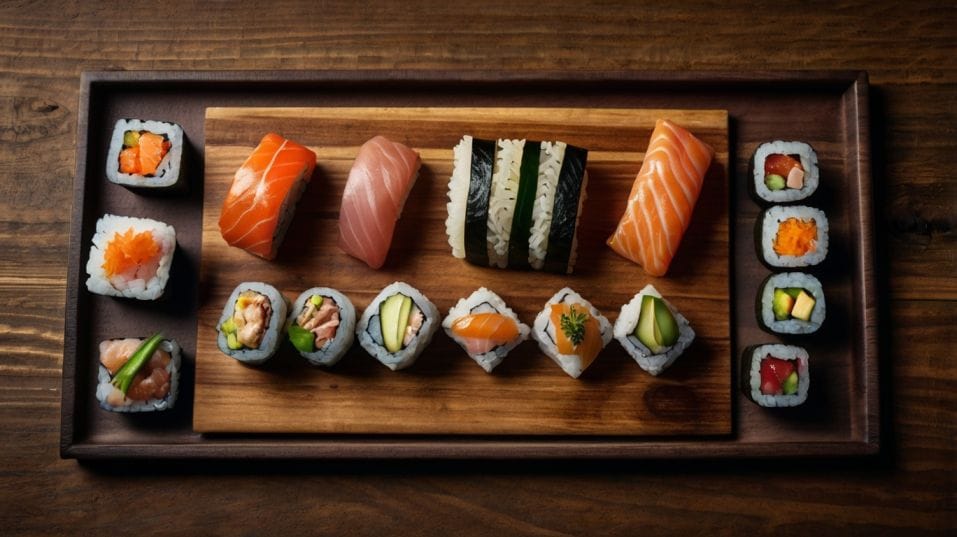Can You Pair Whiskey with Sushi? Yes, Here’s How
Think whiskey can’t pair with sushi? Think again. Learn how to match pours and pieces for better taste, clarity, and bottle confidence.

Ever wonder if whiskey and sushi can actually work together? Not just as a novelty—but as a legit, mind-shifting pairing? If you're getting serious about whiskey, matching it with food unlocks more than flavor.
It sharpens your palate, teaches control, and helps you choose better bottles. This isn’t about breaking rules. It’s about understanding structure—and using it to create pairings that feel effortless, not forced.
Sushi Isn’t Delicate. It’s Engineered.
Let’s kill the biggest myth first. Sushi isn’t soft, fragile, or too subtle for whiskey. It’s precise. Clean cuts, balanced textures, fine-tuned seasoning.
Every piece is a calibrated delivery system for umami, acidity, salt, and temperature. What you put in your glass either supports that structure—or knocks it sideways.
This is where most whiskey pairings fail. They chase contrast without thinking about construction. A heavy bourbon might crush the rice.
A peaty scotch might steamroll the fish. You’re not trying to compete with the sushi. You’re tuning in to its rhythm.
So think in terms of weight and architecture. Light-bodied sushi? Reach for a lighter whiskey. Richer bites? Step up the intensity—but always with purpose.

Whiskey with Clean Lines Wins
Start with clarity. If you’re pairing whiskey with sushi, you need something precise—defined aromatics, elegant mouthfeel, a clean finish. Not necessarily soft, but structured.
That’s why Japanese whiskies pair naturally. They're engineered with restraint and refinement in mind. Hibiki, Hakushu, Yoichi—they’re often designed to respect the food, not dominate it.
But don’t limit yourself geographically. A crisp Irish single malt or a soft-spoken Speyside can offer that same finesse. The point is transparency: you want to taste both the whiskey and the fish, without either going dull.
Avoid syrupy or over-oaked expressions unless you’ve got an equally rich piece of sushi on the plate. Fatty cuts like toro or anago can handle it—but only if the whiskey’s finish is tight and well-balanced.
Proof and Fat: The Most Overlooked Pairing Variable
ABV is your hidden weapon. Most drinkers treat proof like a badge of honor. Here, it’s a tool.
Higher-proof whiskey (46–50% ABV) can cut through rich, fatty fish like otoro or uni with surgical precision. It acts like acid in wine, cleaning your palate and amplifying detail.
But with leaner cuts—think snapper, fluke, or scallop—you need to back off. High-proof here feels like static. It drowns out the delicacy.
A lower-proof dram, especially one with minerality or a soft floral profile, preserves the clarity of the fish while adding a gentle lift to the overall experience.
When the fat goes up, so can the proof. When the fish is subtle, you dial it back. That calibration? That’s real pairing work.
Smoke, Peat, and Flame: Controlled Fire
Peated whisky lovers—here’s your moment. You can use smoke, but sparingly. Think of it like a kitchen torch. A little caramelization? Amazing. A blowtorch to the face? Ruins the dish.
Islay malts or smoky Japanese expressions can be incredible with seared or grilled fish.
Saba, anago, or bonito benefit from a peaty counterpoint—especially when there’s char on the fish. That’s where the smoke mirrors the cooking method, not the flavor alone.
But raw, translucent cuts? They demand subtlety. In those cases, reach for a lightly peated dram, or one with a touch of earth, moss, or iodine. Enough to add tension, but not enough to overwhelm. Smoke, when it works, adds shape—not volume.
Watch the Salt: It’s Already There
Most sushi is inherently salty—between the soy sauce, seaweed, and cured toppings. That means your whiskey doesn’t need to bring more salinity to the table. Too much, and the whole thing goes flat.
Whiskeys with coastal or maritime profiles can work—but only if they’re balanced. A touch of sea spray is good. A mouthful of brine? Not so much. You want to layer flavor, not double down on it.
Sherried or wine-cask-matured whiskies are especially interesting here. They add dried fruit, nuttiness, and subtle acidity, which can offset salt and fat without clashing with the fish.
Again, this isn’t about richness—it’s about tension. You’re building a conversation between the bite and the pour.
Soy Sauce Changes Everything
Soy sauce is the wild card. It boosts salt, umami, and sweetness in one move. That changes the whiskey landscape. A dram that felt too lean before might suddenly click into place.
Whiskeys with a sherry influence often shine here—think nuttiness, stewed fruit, even a bit of spice. These notes can deepen the sushi’s savory elements without getting cloying.
But go easy. Too much soy, and everything becomes muddy. Use the lightest touch—or skip it on bites where the pairing is already working.
When soy is in play, your whiskey needs a spine. Acidity, spice, or tannin—something to hold up against the sauce. Otherwise, the fish disappears.
Temperature Sync: A Pro Move Most Miss
Here’s one of the most overlooked tricks: serve your whiskey just below room temperature. Why? Because cold sushi and warm whiskey don’t mesh. The contrast in temperature exaggerates the alcohol and dulls your palate.
Chill your whiskey slightly. Not cold—but cool to the touch. It tightens up the alcohol and brings the mouthfeel closer to the sushi. This creates a textural harmony that pulls the whole pairing into focus.
And if you’re drinking something cask strength, add a drop or two of water. It’s not dilution—it’s precision. Water opens the whiskey, rounds the alcohol, and reveals the softer flavors that actually play well with food. Don’t be precious. Be effective.
Final Thoughts: Get in the Game
Pairing whiskey with sushi isn’t a stunt—it’s a skill test. You’re working without a net. The flavors are clean, the balance is delicate, and the margin for error is small.
But that’s the point. Master this, and you’ll start to see whiskey through a sharper lens.
You’ll stop buying bottles just because they’re rare or hyped. You’ll start collecting what actually performs. Your palate will get faster, your instincts better. You’ll understand the difference between intensity and clarity—and why it matters.
So go try it. Pick a bottle with clean structure and thoughtful flavor. Order a few pieces—fatty, lean, grilled, raw. Taste slow. Think critically. Then do it again next week. That’s how you get good. That’s how you drink with purpose.
Not to impress anyone. Not to chase trends. To know exactly what’s in your glass—and why it belongs there.




